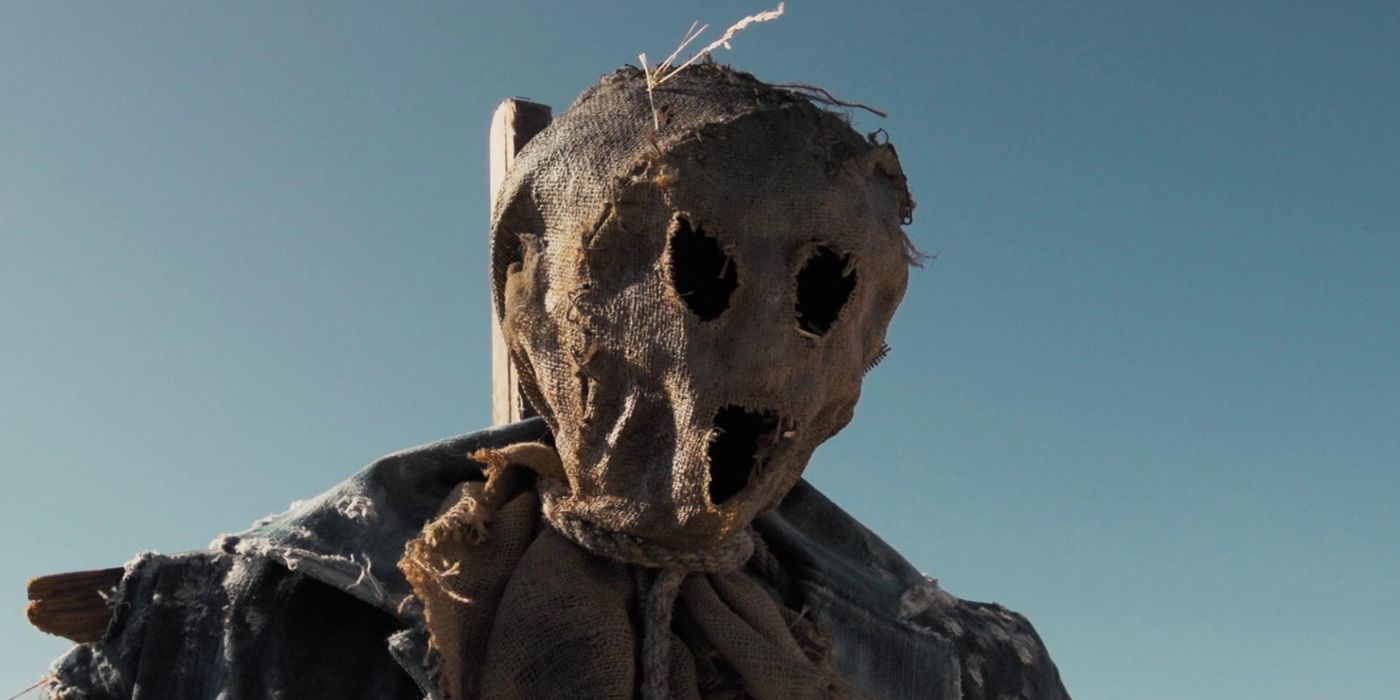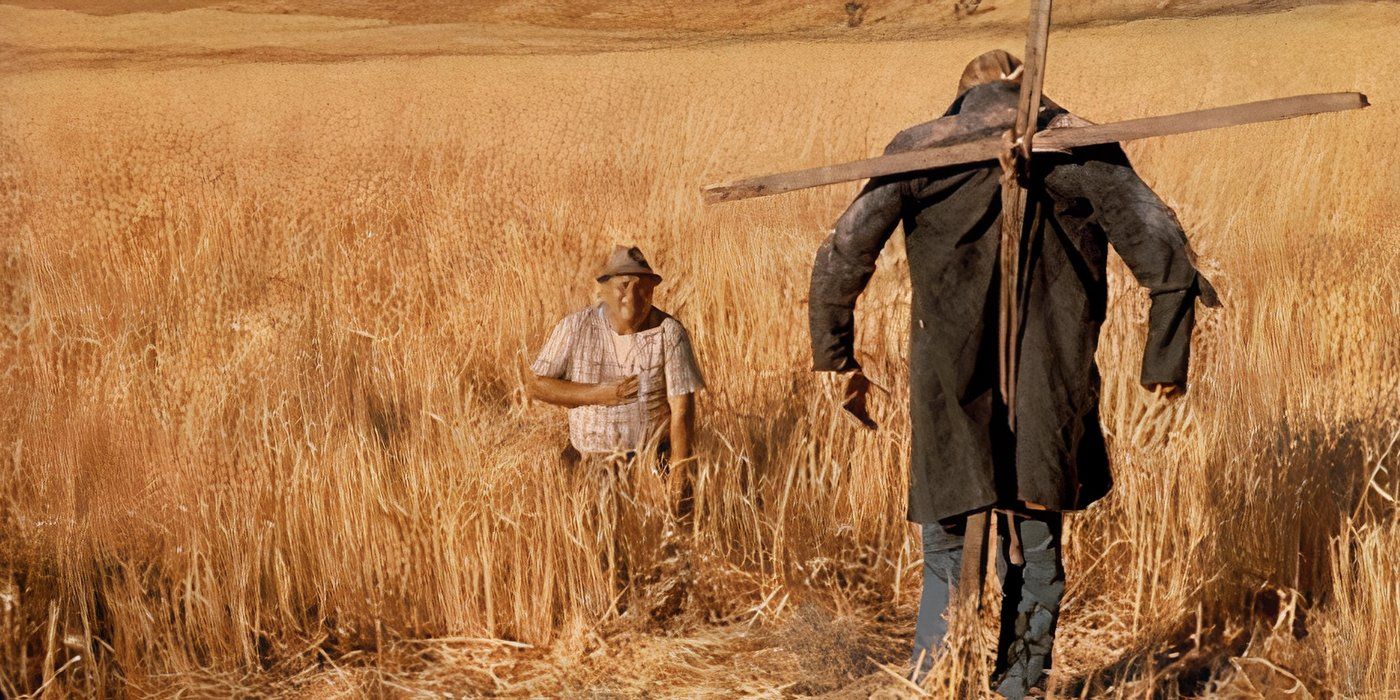
What people find scary in movies is different for everyone. Some horror films rely on graphic violence, while others create fear through suspense and atmosphere. While big-budget movies often get the attention, the 1981 TV movie *Dark Night of the Scarecrow* showed that true horror could be effective even on a smaller scale. Originally airing on CBS during Halloween, it became a fan favorite despite having very little on-screen gore. Because it was made for television, the film had to build tension through suggestion and atmosphere rather than shocking visuals. Instead of being a weakness, these limitations actually made *Dark Night of the Scarecrow* more effective. The filmmakers intentionally held back, letting the audience’s imagination fill in the details – and often, what we imagine is scarier than anything shown on screen.
Since it first aired, *Dark Night of the Scarecrow* has become a beloved classic among horror fans. It became available on DVD in 2010 and Blu-ray in 2011, introducing it to a new audience. The movie proves that made-for-TV films can be genuinely scary and impactful. It’s unique in its simplicity and relies on building suspense through subtle storytelling, as it wasn’t connected to any existing franchise. The story of injustice and revenge is timeless, resonating with many modern horror themes. This is why *Dark Night of the Scarecrow* remains as powerful and relevant today as it was when it debuted in 1981.
Dark Night of the Scarecrow Highlights Small Town Horror
Before he brought us *Dark Night of the Scarecrow*, Frank De Felitta was already a well-respected name in horror, having penned the novels behind films like 1975’s *Audrey Rose* and 1978’s *The Entity*. The story actually started as a script by J.D. Feigelson, meant for an independent film release. But CBS saw its potential and quickly picked it up, turning it into one of their movie-of-the-week specials instead.
As a fan, I always find it amazing how little they had to change from the original script, even though they ended up releasing it on network TV. And get this – *Dark Night of the Scarecrow* was filmed in just 17 days! They were actually scheduled for 18, but a set fire caused them to lose a whole day of shooting. It’s cool to know they filmed it in Piru, California, and a lot of those buildings they used are still standing today.
A key element of *Dark Night of the Scarecrow*’s atmosphere is that many scenes were filmed at actual night, enhancing the film’s realism. While shooting in the dark creates a better visual result than relying on artificial lights, it also significantly increased the technical challenges for the crew – an impressive accomplishment given the film’s tight seventeen-day shooting schedule. The cinematography, handled by Vincent Saizis, was particularly noteworthy in achieving this.
As a film lover, what really struck me about this movie was how beautifully they used darkness. It wasn’t just a stylistic choice; it *felt* real, almost like another character. You could tell the filmmakers really cared about getting things right, even if it meant more work – they chose quality over easy solutions, and it absolutely shows. Knowing they had to limit the on-screen violence, they smartly focused on building atmosphere, and those actual night shoots were a huge part of that. It created a genuinely immersive experience.
The film begins in a close-knit small town. *Dark Night of the Scarecrow* immediately hints that hidden secrets and biases exist beneath the town’s peaceful exterior. The story centers around Bubba Riter, played by Larry Drake – an actor famous for his other roles – and follows his relationship with a young girl named Marylee Williams. Bubba is a kind, but intellectually disabled, man who often spends time with Marylee.
At the beginning of the movie, a dog attacks Marylee while she’s playing in a neighbor’s yard, and many people in town immediately blame Bubba. This leads a group of vigilantes to hunt him down, and they end up killing him while he’s trying to hide in a field near his house, cleverly disguised as a scarecrow. Director Frank De Feiltta uses the film’s supernatural horror elements to actually tell a story about right and wrong.
The main villain in the film is responsible for Bubba’s death. Charles Dunning, famous for his work in *O Brother, Where Art Thou*, portrays Otis Hazelrigg, a spiteful mailman who falsely accuses Bubba and leads the group that kills him. He later discovers Marylee was only injured by a dog and is okay. Lane Smith, known from *The Mighty Ducks*, plays one of Hazelrigg’s partners in the crime. This group of four embodies the dangerous mindset of a small town, where people fear and punish anyone who is different.
Following Bubba’s murder, the men involved are swiftly brought to trial, but *Dark Night of the Scarecrow* uses this moment to further emphasize the widespread corruption within the town. The judge and residents readily believe the murderer’s story and quickly end the trial. The film suggests that the true evil isn’t Bubba returning as a scarecrow, but the people who comprise the town itself.
Dark Night of the Scarecrow Adds to the Legacy of Made-for-TV Horror
By the early 1980s, several made-for-TV horror movies had already shown that the genre could succeed on television, clearing the path for *Dark Night of the Scarecrow*’s popularity. While films like John Carpenter’s *Halloween* and the first *Friday the 13th* were doing well in theaters, networks realized horror could also attract viewers at home. The 1979 miniseries *Salem’s Lot*, based on the Stephen King novel, is still considered one of the scariest and most successful horror adaptations for TV. The 1975 film also found a large audience when it aired on ABC. These earlier successes demonstrated that viewers enjoyed horror on TV, and a big budget wasn’t required to create a hit.
Dark Night of the Scarecrow continues the tradition of effective, low-budget horror films. After the tragic death of Bubba and the resulting trial, the story moves into a supernatural tale of revenge. The townspeople and those responsible for Bubba’s death quickly try to forget the murder and return to normal life. The scarecrow itself isn’t shown often, instead appearing far off as a warning of what’s to come. Harliss Hocker, played by Lane Smith, is the first to encounter it on his property. He hears a strange sound in his barn, and while investigating, he accidentally falls into a wood chipper.
Otis, the leader of the group responsible for the murder, at first doesn’t believe anything supernatural is happening and insists Harliss’ death was just an accident. But this doesn’t reassure the other two men involved, especially as increasingly strange things start to occur. One of them, Philby (played by Claude Earl Jones), is trapped and drowns in a grain silo, suffocated by the grain itself. Gradually, each man is forced to confront his own guilt. Otis stubbornly refuses to accept a supernatural explanation, instead blaming Bubba’s mother. He breaks into her house one night, intending to confront her, but frightens her so severely that she suffers a heart attack. He then tries to cover up her death by setting fire to her house, making it look like an accident.
The last accomplice to Otis is Skeeter Norris, who cracks under the pressure of their friends’ deaths and threatens to confess everything to the police. Otis kills Skeeter to keep him quiet, doing so while they’re exhuming Bubba’s grave to make sure he’s still buried there. Left on his own, Otis loses control when he spots Marylee and chases her through a pumpkin patch. In a moment of madness, he accidentally kills himself with the pitchfork he intended to use on Bubba, and in his dying moments, understands that Bubba has gotten his revenge. The ending of *Dark Night of the Scarecrow* is both fulfilling and unsettling, largely because the supernatural force driving the story is the true hero.
Dark Night of the Scarecrow is a Must-Watch Classic
I’ve always been fascinated by *Dark Night of the Scarecrow*. While it was made for television and had to work within those limits, it really kicked off this whole trend of scary scarecrows in horror! As far as I know, it was the very first movie to really *focus* on a scarecrow as the main threat. It took something already spooky – a classic Halloween image – and turned it into a symbol of terrifying, supernatural revenge. What I find truly brilliant is how much it *doesn’t* show you – it relies on what you imagine, and that makes it a really important and memorable made-for-TV horror film.
For both new and longtime horror fans, *Dark Night of the Scarecrow* proves that clever filmmaking can thrive even with limitations. Instead of relying on gore, the movie builds suspense through its unsettling atmosphere and exploration of social issues. The character of Bubba is surprisingly relatable, and his transformation into a supernatural being is a clever twist on the typical scarecrow story. Considered a landmark made-for-TV horror film and a pioneer of its kind, it’s a must-watch this Halloween.
Read More
- FTN/USD
- Прогноз криптовалюты CRV: прогнозы цены CRV
- Прогноз криптовалюты USD1: прогнозы цены USD1
- Доллар обгонит бразильский реал? Эксперты раскрыли неожиданный сценарий
- Йена обгонит южнокорейскую вону? Эксперты раскрыли неожиданный сценарий
- Disney Announces Hulu Phaseout Window
- Золото прогноз
- Прогноз нефти
- Доллар обгонит гривну? Эксперты раскрыли неожиданный сценарий
- Harry Potter’s Witches And Wizards Are Headed To Hogwarts. But There’s A Whole Plan For How They’ll Go To Real School, Too
2025-10-14 17:39
